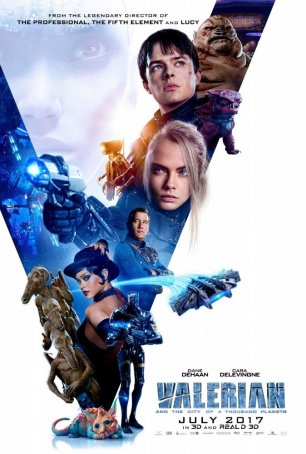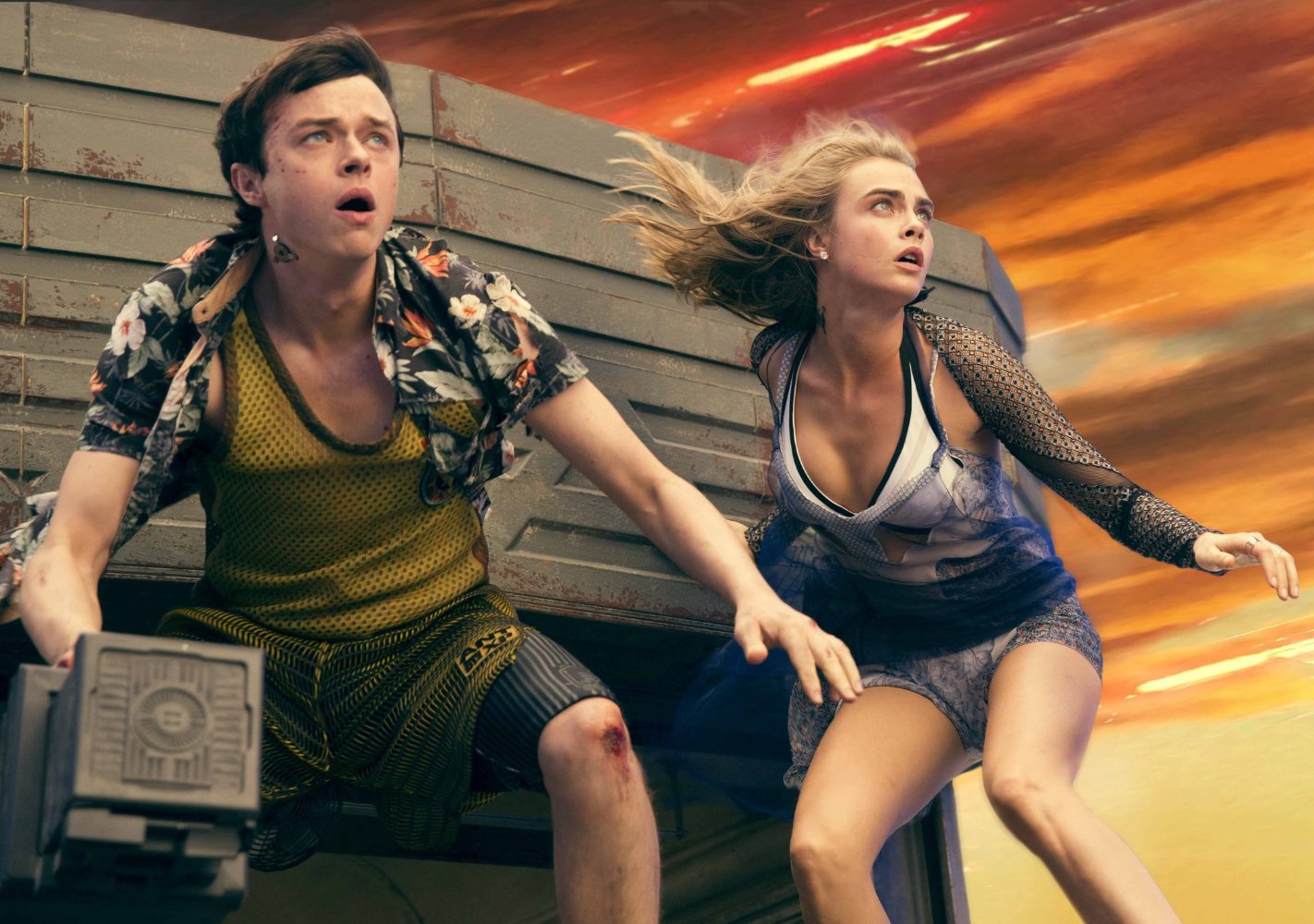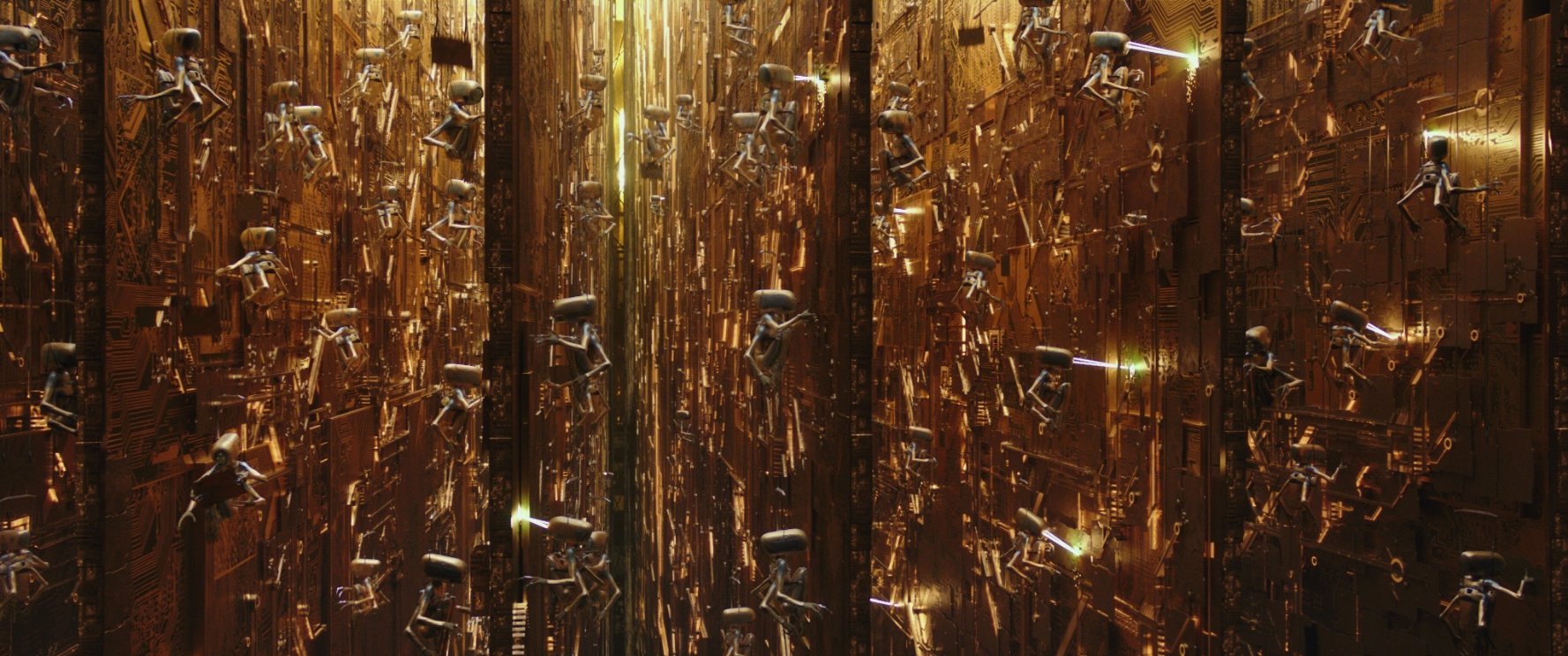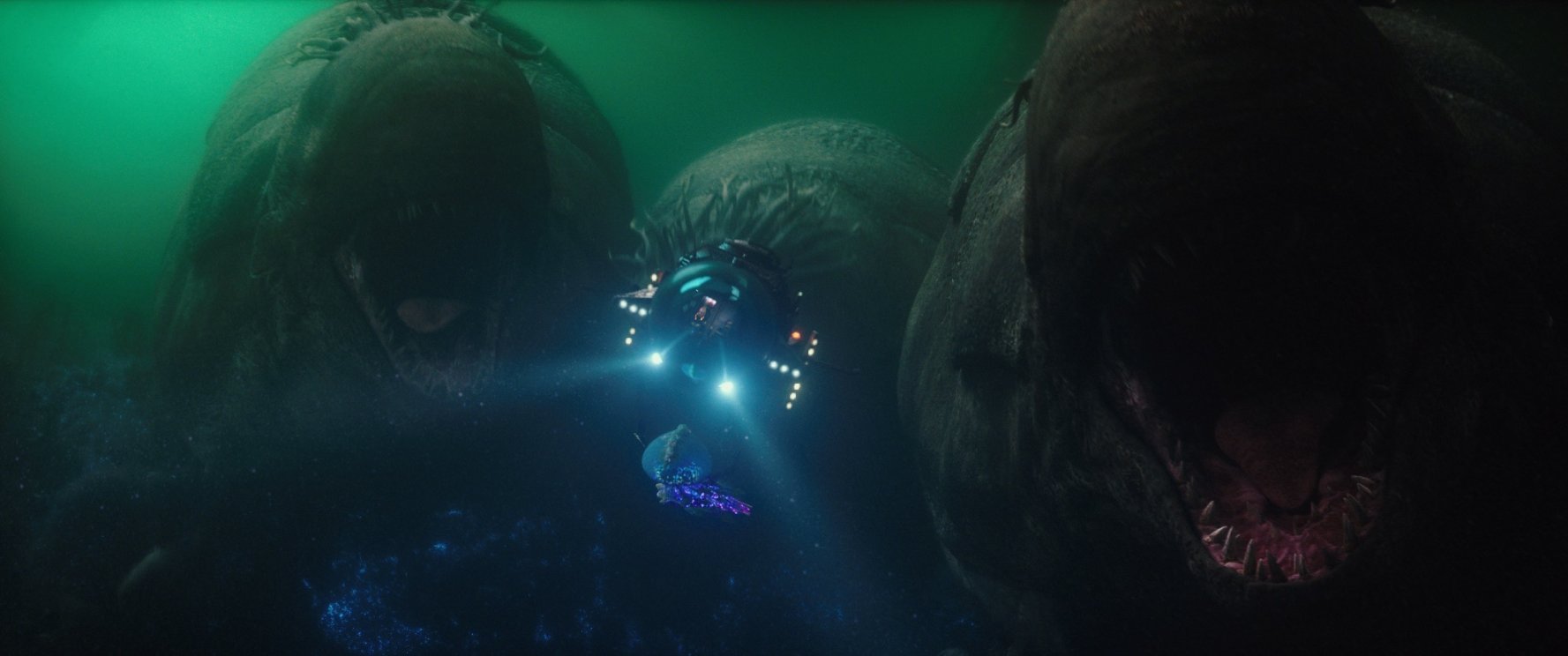Valerian and the City of a Thousand Planets (France, 2017)
July 20, 2017
Is it unfair to compare Luc Besson to Michael Bay? Some would argue that it is but I’m not sure Besson would be among them. Both directors make the movies they want to make and, although there’s more artistry evident in Besson’s work, they have a preference for fast-moving, visually engaging fare that is less likely to stimulate the mind than other organs. Although Besson substitutes an orgy of CGI-generated imagery for Bay’s pyrotechnics, both are entrenched in the school of mainstream blockbuster movie-making that argues the preeminence of pure entertainment and razzle-dazzle over everything else.
Valerian and the City of a Thousand Planets, based on the French comic book series “Valerian and Laureline” by writer Pierre Christin and artist Jean-Claude Mezieres, is considerably more interesting and watchable than Bay’s latest Transformers movie, but the underlying similarities are hard to ignore. In terms of a direct inspiration, however, this movie owes more to Besson’s own The Fifth Element and James Cameron’s Avatar than to any of Bay’s films. Just because both men are crafting movies for the same audience doesn’t mean they appreciate the same stories.
 Valerian and the City
of a Thousand Planets has a pulp-influenced space opera narrative about a
traditional heroic type, Major Valerian (Dane DeHaan), and his smart, capable
assistant/love interest, Sgt. Laureline (Cara Delevingne). They go on missions
assigned to them by the Human Federation Government. Their latest adventure involves
traveling to a distant planet, capturing a rare creature, and returning to
Alpha (the titular “City of a Thousand Planets”). Once there, they must protect
The Commander (Clive Owen) as he seeks to combat an unknown danger building
deep within the base. There’s also the matter of a seemingly disconnected race
of peaceful aliens whose backstory, which forms a prologue to the movie,
becomes central to Valerian and Laureline’s assignment.
Valerian and the City
of a Thousand Planets has a pulp-influenced space opera narrative about a
traditional heroic type, Major Valerian (Dane DeHaan), and his smart, capable
assistant/love interest, Sgt. Laureline (Cara Delevingne). They go on missions
assigned to them by the Human Federation Government. Their latest adventure involves
traveling to a distant planet, capturing a rare creature, and returning to
Alpha (the titular “City of a Thousand Planets”). Once there, they must protect
The Commander (Clive Owen) as he seeks to combat an unknown danger building
deep within the base. There’s also the matter of a seemingly disconnected race
of peaceful aliens whose backstory, which forms a prologue to the movie,
becomes central to Valerian and Laureline’s assignment.
A lot of Valerian and the City of a Thousand Planets involves running around in deep parts of Alpha, Valerian rescuing Laureline, and Laureline rescuing Valerian. Although I can appreciate the importance of world-building, the movie detours so frequently from its main narrative trajectory that it can become difficult to remember the point of the story which, when carefully considered, is fairly straightforward. There are also some bizarre interludes that serve primarily to pad out the running time. One involves a lengthy dance sequence featuring Rihanna as the shapeshifter Bubble. Although the character of Bubble is interesting in an Odo-lite sort of way, there’s no reason for this scene to exist except as a way to give Rihanna more screen time.
 Dane Dehaan is more appealing here than in Gore Verbinski’s The Cure for Wellness, although his
attempts to channel Harrison Ford while sounding like Keanu Reeves aren’t
entirely successful. Cara Delevingne, meanwhile, is more than capable as
Laureline – she’s a stronger actress than one might suppose considering her
modeling background. (This isn’t her first film but it’s by far her most high-profile
role to-date). She makes Laureline feisty but with a human element and is at
home doing all sorts of kick-ass stunts and playing opposite motion captured
aliens. She and Dehaan share a nice rapport that suggests affection without
demanding overt physicality. The romantic elements of Valerian and the City of a Thousand Planets are surprisingly
effective.
Dane Dehaan is more appealing here than in Gore Verbinski’s The Cure for Wellness, although his
attempts to channel Harrison Ford while sounding like Keanu Reeves aren’t
entirely successful. Cara Delevingne, meanwhile, is more than capable as
Laureline – she’s a stronger actress than one might suppose considering her
modeling background. (This isn’t her first film but it’s by far her most high-profile
role to-date). She makes Laureline feisty but with a human element and is at
home doing all sorts of kick-ass stunts and playing opposite motion captured
aliens. She and Dehaan share a nice rapport that suggests affection without
demanding overt physicality. The romantic elements of Valerian and the City of a Thousand Planets are surprisingly
effective.
Would that the same could be said of the overall narrative which, in addition to being no more remarkable or complex than generic Star Trek, is constantly being hijacked by Besson’s need to show off. Yes, the real reason to see Valerian is the special effects. That shouldn’t be a surprise to anyone. It’s also a given that movies that spend hundreds of millions of dollars on visuals rarely pay even 1% of that on screenwriting. But, as pretty as some of the scenes are – and more than a few are very pretty – the movie runs far too long for the story it’s telling. The effects are often the point of a scene rather than an enhancement. And more than one sequence plays like a video game – jump here, run, turn, avoid this obstacle.
 Valerian and the City
of a Thousand Planets, despite its designation as mainstream summer fare,
has a political perspective. Science fiction often deals in allegory and this
is no exception. There’s nothing subtle about the points Besson makes about the
perils of climate change (an early scene in which paradise is destroyed), the
importance of multiculturalism (Alpha’s diversity of species), and the dangers
of xenophobia. And the threat to the space station’s continued existence is
described as a rot that has been born deep within.
Valerian and the City
of a Thousand Planets, despite its designation as mainstream summer fare,
has a political perspective. Science fiction often deals in allegory and this
is no exception. There’s nothing subtle about the points Besson makes about the
perils of climate change (an early scene in which paradise is destroyed), the
importance of multiculturalism (Alpha’s diversity of species), and the dangers
of xenophobia. And the threat to the space station’s continued existence is
described as a rot that has been born deep within.
When Besson released The Fifth Element, I remember feeling dissatisfaction and disappointment. My reaction to Valerian and the City of a Thousand Planets is similar. Watching this movie, my sense was that Besson was only tangentially concerned about characters and plot. This was instead an attempt to out-Lucas George, out-Cameron James, and out-Spielberg Steven. On a purely visual level, Valerian and the City of a Thousand Planets deserves mention among the most technically accomplished works of those three. But as a complete motion picture experience, it falls considerably short.
Valerian and the City of a Thousand Planets (France, 2017)
Cast: Dane DeHaan, Cara Delevingne, Clive Owen, Rihanna, Ethan Hawke
Home Release Date: 2017-11-21
Screenplay: Luc Besson, based on “Valerian and Laureline” by Pierre Christin & Jean-Claude Mezieres
Cinematography: Thierry Abrogast
Music: Alexandre Desplat
U.S. Distributor: STX Entertainment
U.S. Release Date: 2017-07-21
MPAA Rating: "PG-13" (Violence, Profanity)
Genre: Science Fiction
Subtitles: none
Theatrical Aspect Ratio: 2.35:1
- (There are no more better movies of Cara Delevingne)
- Tulip Fever (2017)
- Paper Towns (2015)
- (There are no more worst movies of Cara Delevingne)

Comments